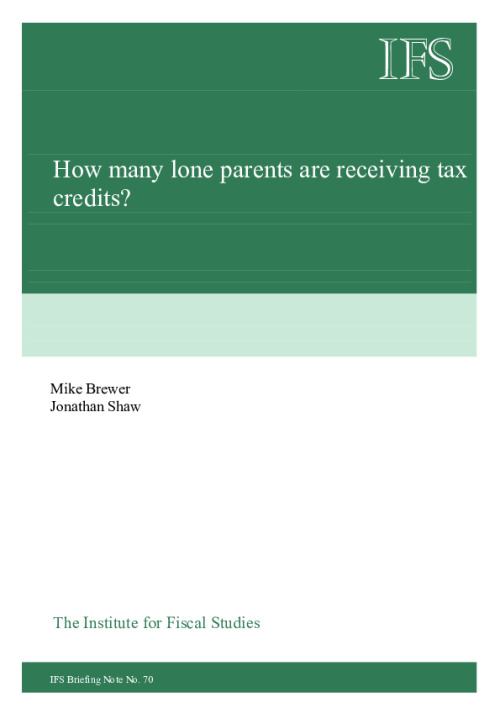Brewer et al. (2006), who analyse what happened to child poverty between 1998/99 and 2004/05, show that estimates of spending on tax credits received by families with children based on the FRS have been getting increasingly inaccurate over time compared with estimates made by HM Revenue & Customs (HMRC), with around õ billion of spending on tax credits received by families with children going unrecorded by the FRS in 2004/05.
However, a detailed comparison of estimates of the number of families with children receiving tax credits (or equivalent in out-of-work benefits) based on the FRS with the equivalent estimates based on the government's administrative data is confounded by the fact that HMRC estimates that the government is paying the child tax credit and the equivalent in out-of-work benefits to more lone parents than official statistics suggest live in the UK.










